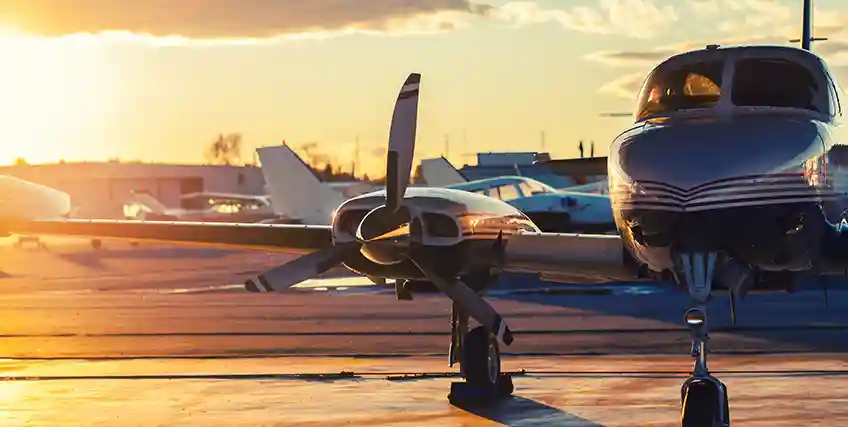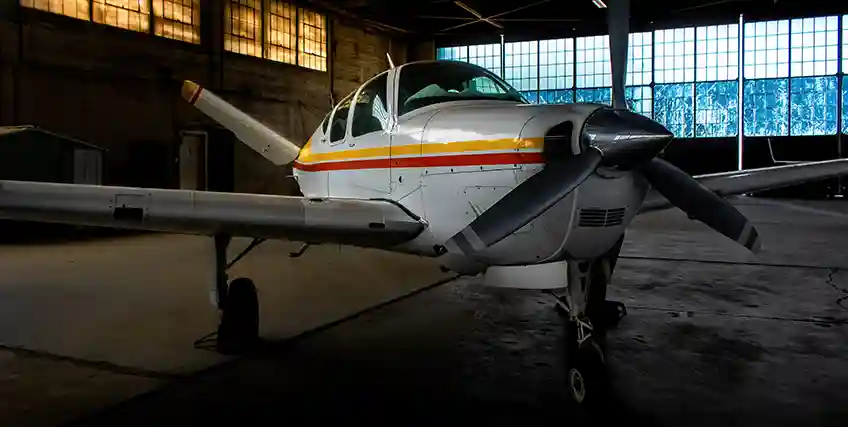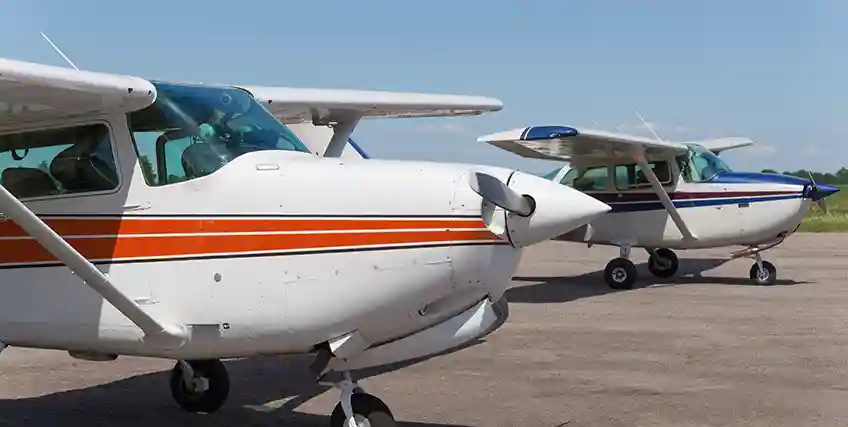Aircraft Leasing vs. Buying What's Best for Small Charter Operators
June 05, 2025 | Last Updated on: June 09, 2025

To run a small charter business in the United States, it requires strategic decisions that determine long-term outcomes. Out of all the things in this business, one of the most important among them is to build and manage a reliable fleet. However, the question that often runs through the minds of small charter operators is what to choose: aircraft leasing vs. buying?
Understand that each path offers unique financial and operational advantages. Whether it is aircraft leasing or to purchase aircraft outright, your decision could influence your upfront costs, ongoing expenses, and overall profitability.
In this article we will discuss all the basics of aircraft leasing vs. buying, the benefits of aircraft ownership, cost comparisons, and what makes sense for your charter business. With this deep understanding, you’ll surely be able to make an informed decision for your business.
Understanding the Aviation Industry for Small Charter Operators
In today’s time, the aviation industry is filled with potential for small charter operators. According to the Federal Aviation Administration, general aviation supports over 1.1 million jobs in the U.S. Therefore, small charter businesses contribute significantly by offering regional air travel, private jet services, and medical or cargo flights.
Yet, the aviation market is capital-intensive. It requires strict financial planning with other essential resources like fuel, labor, compliance, and fleet management. However, your aircraft acquisition model, aircraft leasing vs. buying, affects every part of your operation, including financing options. Additionally, it also impacts access to aircraft models from top manufacturers like Boeing and Airbus, along with long-service capabilities.
Typically, small business operators find that to achieve profitability, charter companies need to strike a balance between service expansion and cost control. This involves evaluating current market trends, demand forecasts, aircraft performance, and competitive positioning. Also, it requires aligning financial capabilities with operational ambitions.
What is Aircraft Leasing
Aircraft leasing allows a business to use a plan without owning it. Instead, a lessee pays lease payments to a leasing company, which in turn retains ownership. When compared between aircraft leasing vs. buying, leasing is quite a popular model in commercial and private jet aviation.
Small charter companies can focus on operations rather than managing high-cost assets with aircraft leasing. With the right lease agreement, it becomes easier to scale operations in line with seasonal or market-driven demands.
Not only this, with leasing, aircraft can be rotated or upgraded quickly, depending on specific needs. This helps charter companies to remain competitive in a rapidly evolving industry.
Types of Aircraft Leases
Here are different types of aircraft leases when choosing a leasing option between aircraft leasing vs. buying.
Wet Lease
This lease includes aircraft, crew, maintenance, and insurance. It's useful for short-term needs or charter startups that lack infrastructure. Wet leases allow instant entry into operations with minimal administrative load.
Dry Lease
In this lease type, only the aircraft is leased, and the lessee handles operations and compliance. This structure often suits experienced operators with existing crew and ground support. The dry lease provides more control but requires deeper operational readiness.
Operating Lease
An operating lease is a short-term lease that is cost-effective and ideal for flexibility. This lease is commonly used when flying wet lease or dry lease aircraft. It can often appeal to small charter operators who want access to newer aircraft without long-term financial risk.
Moreover, these leases have shorter durations which makes them suitable for experimental routes or temporary demand surges.
Finance Lease
This is a long-term lease structure that is quite similar to ownership. The lease term may include a purchase or leaseback option at residual value. Finance leases typically involve higher lease payments and longer commitments.
For small charter operators who are planning to eventually own the aircraft, these leases offer a gradual path toward ownership.
Benefits of Aircraft Leasing
Between aircraft leasing vs. buying, small charter operators often prefer leasing to avoid large capital outlay. Below are the benefits of aircraft leasing.
- Lower Upfront Costs: Leasing helps you get operational without heavy upfront investment. This conserves liquidity and reduces capital expenditure.
- Upgrade Flexibility: Lease agreements offer flexibility to shift to a brand-new aircraft or different aircraft types as needed.
- Simplified Maintenance: Many leases include maintenance support from the lessor, reducing unexpected overhaul and operating expenses.
- Possible Tax Benefits: Lease payments may be fully deductible. Therefore, these tax advantages can help reduce the overall total cost of your fleet operation.
- No Depreciation Risk: Leasing allows the lessee to avoid aircraft depreciation and resale value management, which remain the responsibility of the leasing company.
What is Aircraft Buying
Buying an aircraft means full aircraft ownership, either through cash or aircraft financing. Charter operators can choose between new aircraft or owned aircraft from the resale market. When comparing aircraft leasing vs. buying, the purchase decision involves more detailed risk analysis and a longer investment horizon.
Purchasing an aircraft grants long-term control with operational freedom. However, many operators choose to purchase aircraft after achieving sustained revenue and route consistency. Additionally, buying allows you to develop custom cabin features, paint schemes, and route schedules without any third-party constraints.
Benefits of Aircraft Buying
Between aircraft leasing vs. buying, purchasing aircraft often suits long-term planning and consistent demand. Here are some benefits of aircraft ownership.
- Complete Control: Buying allows you to own the aircraft outright and modify or brand it as needed. You can also include custom interior configurations and branding flexibility.
- Long-Term Cost Efficiency: Operating costs often become more manageable compared to lease rates, after covering the purchase price and financing.
- Depreciation and Possible Tax Benefits: Aircraft charter buyers can deduct depreciation and interest rate expenses over time. This helps in enhancing overall tax benefits.
- Equity Building: Buying an aircraft boosts equity and improves your company’s balance sheet. This also supports future financing goals.
- Better Financing Options: Buying an aircraft opens doors to airline financial services for expansion, refinancing, or upgrades.
Cost Comparison: Aircraft Leasing vs. Buying
When choosing between the two options, aircraft leasing vs. buying, understanding the total cost is essential. Here’s a breakdown of the costs.
Upfront Costs
Leasing has minimal upfront costs and often requires just a deposit. However, buying requires a significant capital outlay that is some percentage of the purchase price. Therefore, between aircraft leasing vs. buying, leasing is more accessible for newer operators, while buying is suited to those with strong financial backing.
Lease Payments vs. Loan Repayments
Lease payments are steady and predictable. However, loan repayments vary with interest rates and financing options. They also require closer cash flow monitoring. When choosing between aircraft leasing vs. buying, owning an aircraft may reduce recurring costs while leasing offers financial consistency.
Operating Expenses
Lease terms may include maintenance, while aircraft owners bear all operating expenses. Owning an aircraft often means higher maintenance expenses but also gives more control over vendor choices and service standards.
Residual Value and Resale
Between aircraft leasing vs. buying, buyers gain resale value. However, lessees return the aircraft, and residual value risk is with the lessor. However, the resale value depends on the aircraft’s age, usage, and manufacturer.
Possible Tax Benefits
Leasing offers tax-deductible lease payments while buying offers depreciation write-offs and interest deductions. Choosing between aircraft leasing vs. buying for tax benefits often depends on your accounting model, long-term vision, and profitability goals.
What is Best for Small Charter Operators: Aircraft Leasing vs. Buying
Small charter operators can make an informed decision between aircraft leasing vs. buying. Here’s how:
Leasing is ideal for
- Charter businesses with limited working capital or unpredicted demand.
- Startups testing the market without a long-term commitment.
- Charter operators who need brand new aircraft for short-term use.
- Companies who want to avoid residual risks and focus on operations.
Buying is ideal for
- Charter companies with consistent air travel demand.
- Businesses that focus on profitability and asset growth.
- Charter operators with access to reliable aircraft financing.
- Companies who aim to build equity and expand their business through owned assets.
Hence, both models come with their own advantages and disadvantages. Aircraft leasing allows speed and flexibility. Whereas aircraft buying supports long-term profitability and control. The best decision often depends on timing, company maturity, and financial health.
Conclusion
Choosing between aircraft leasing vs. buying, fleet decisions define your service model and financial health. Leasing lowers your capital burden and offers flexibility. While buying builds assets, brand equity, and offers long-term tax advantages.
Every charter business is different. Therefore, use your current liquidity, demand forecasts, and strategic goals to choose between leasing and buying.
Want expert help? Connect with airline financial services to explore leaseback programs, interest rate options, and tax-efficient financing options.
Frequently Asked Questions About Aircraft Leasing vs. Buying
What are the main advantages of aircraft leasing for small charter operators?
The main advantages of aircraft leasing include lower upfront costs and greater flexibility. Business operators often prefer it because they can upgrade more frequently and manage cash flow in a better way. However, the benefits of leasing may vary depending on lease terms and business goals.
How does aircraft ownership help in building long-term value?
Aircraft ownership supports long-term value through asset building and equity growth. Some operators often find it more economical as operating costs may become more predictable. However, buying an aircraft depends on usage levels, maintenance practices, and resale timings.
Is leasing more cost-effective than buying an aircraft?
Leasing an aircraft could be more manageable in the short term, especially when capital is limited. Nevertheless, the total costs over time may shift depending on maintenance, lease terms, and residual value. Therefore, what works best between the two options often depends on how the aircraft is used and financed.
When should a charter operator consider buying an aircraft?
A charter operator might consider buying an aircraft when revenue is steady and long-term growth is planned. This approach also offers possible tax incentives and financing leverage. Therefore, purchase decisions should always depend on cash flow, demand, and strategic vision.
Are there any tax benefits associated with leasing or buying?
Both leasing and buying offer tax advantages, but in different ways. Lease payments can often be deducted while buying allows depreciation and interest write-offs. Therefore, understand the impact of both the options based on your business structure and tax strategy. However, if unsure it is advised to consult a tax professional.




